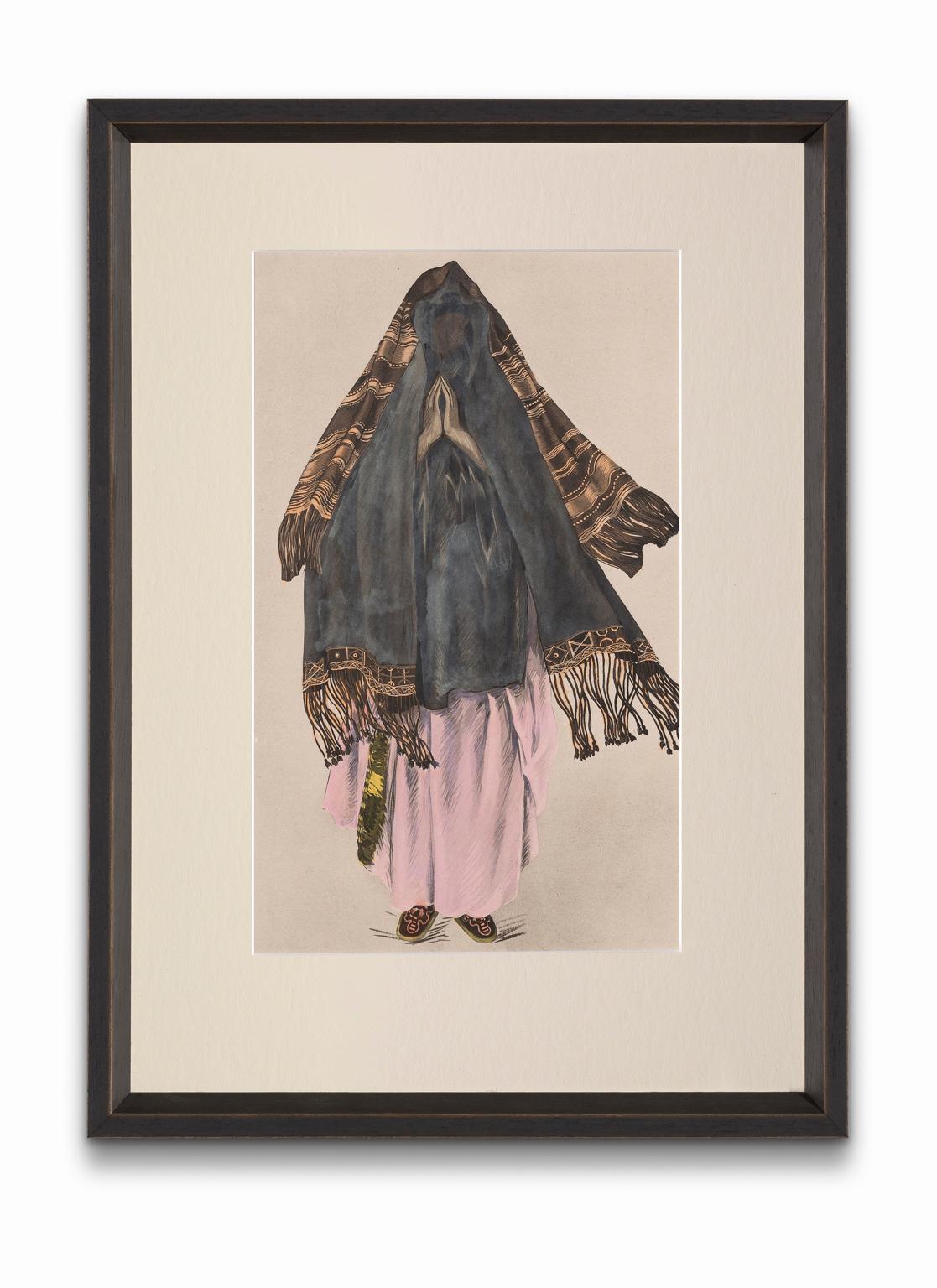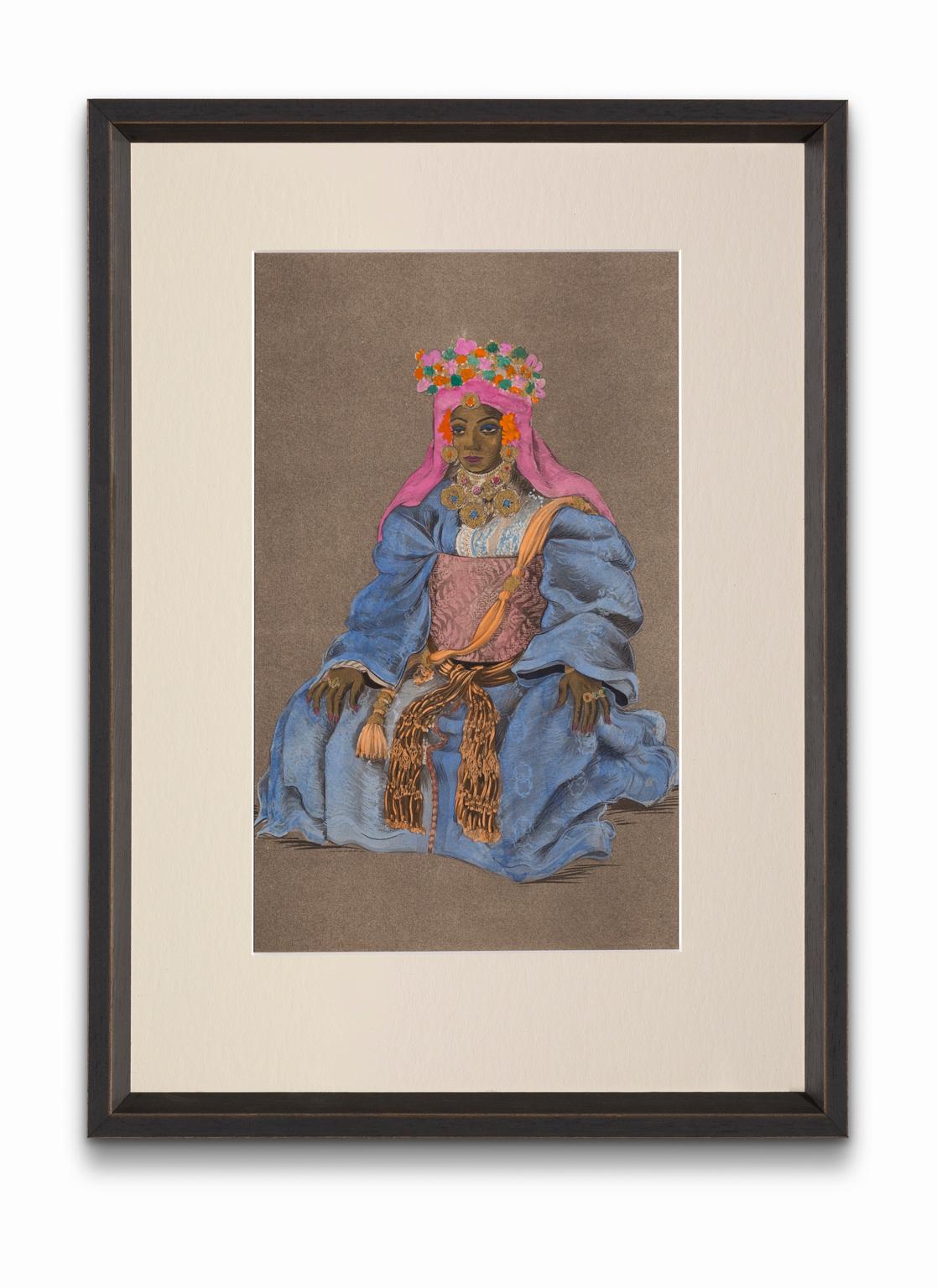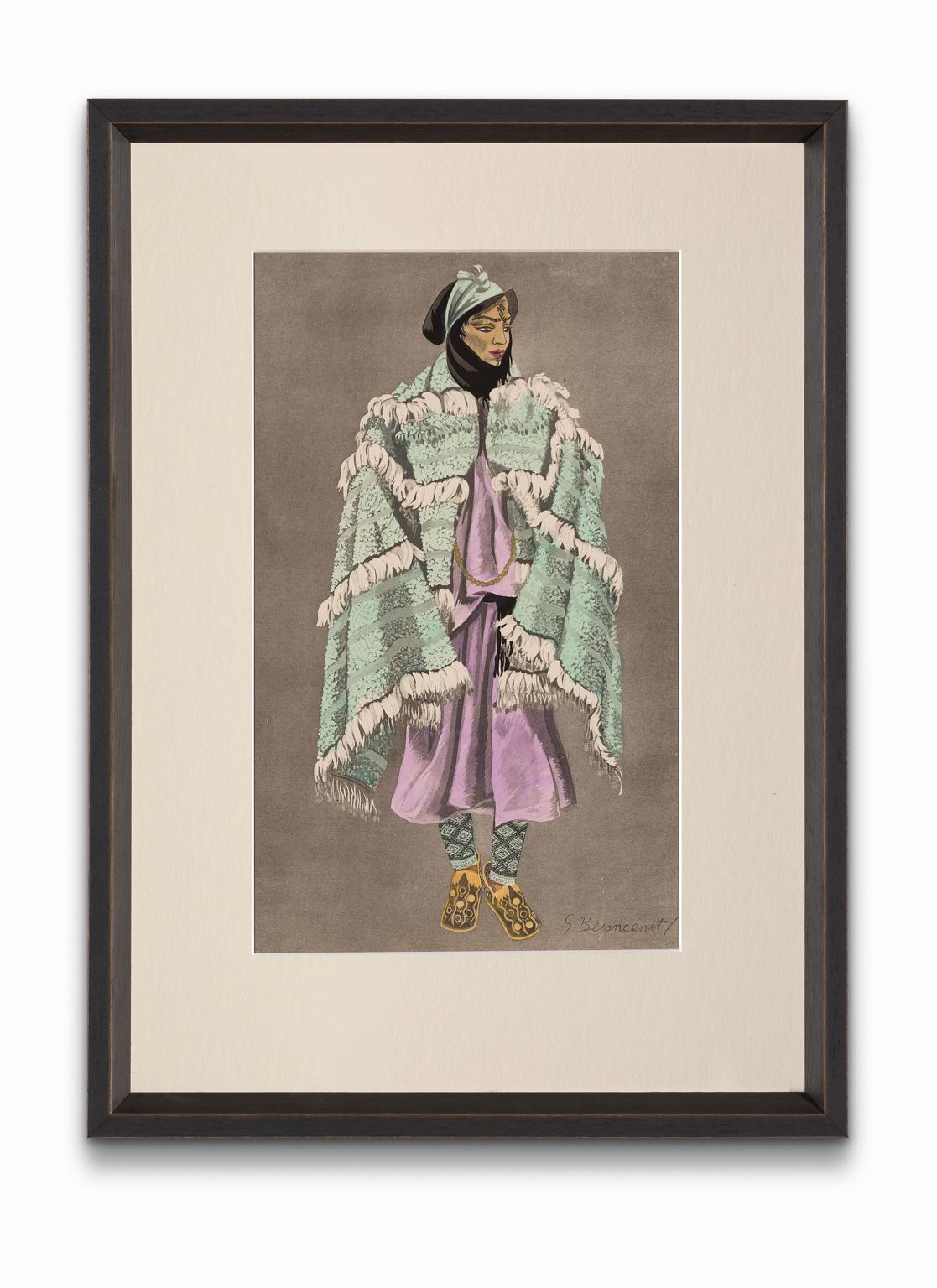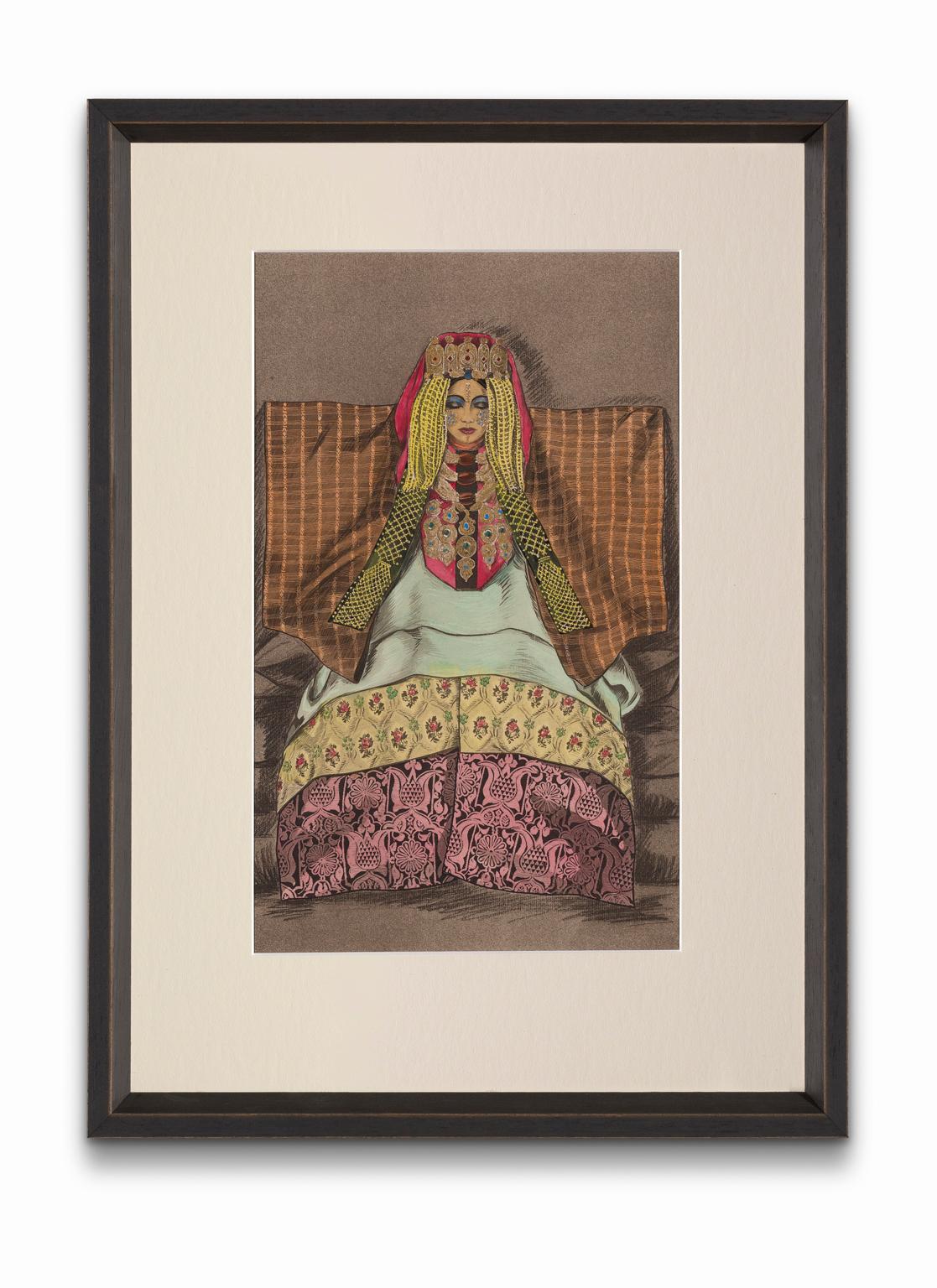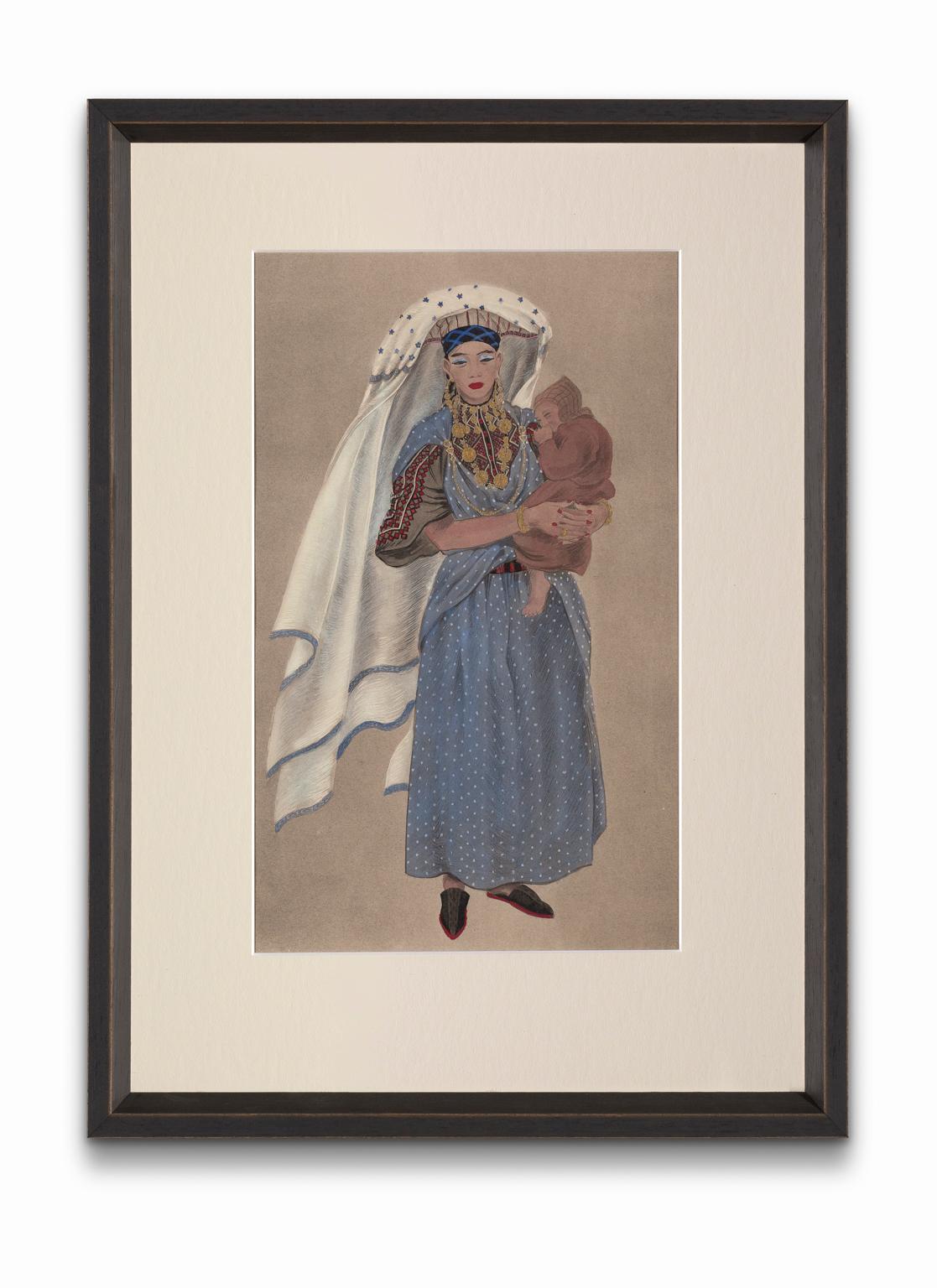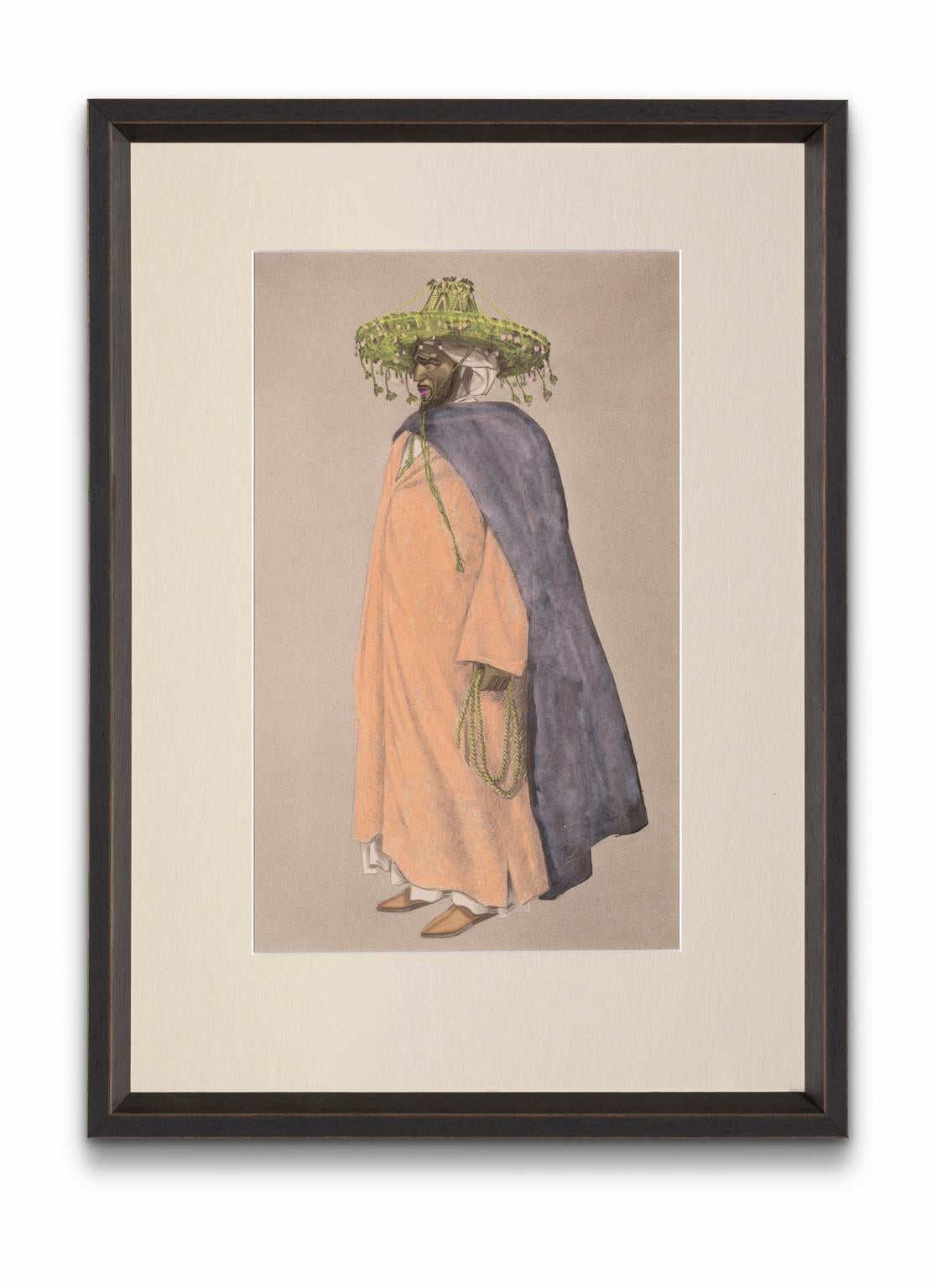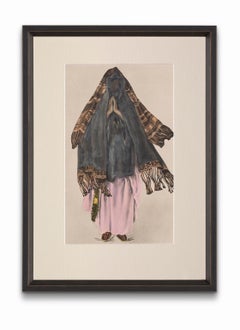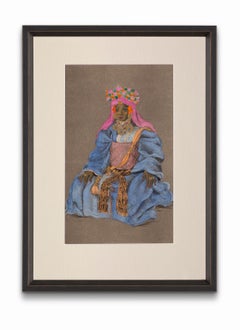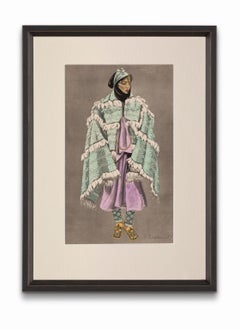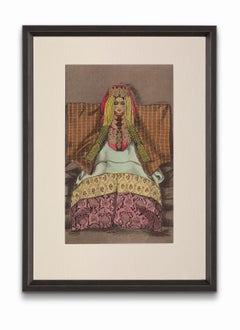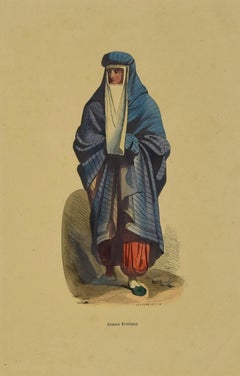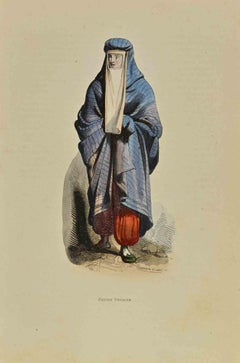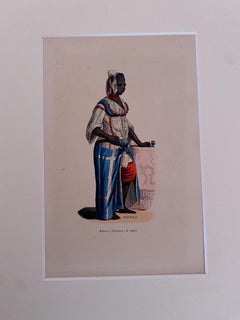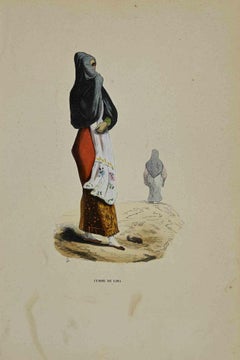Items Similar to "Woman of Tiznit Wearing the Amendil", from "Costumes of Morocco"
Want more images or videos?
Request additional images or videos from the seller
1 of 10
Jean Besancenot"Woman of Tiznit Wearing the Amendil", from "Costumes of Morocco"1942
1942
$1,800
£1,368.61
€1,576.66
CA$2,559.13
A$2,781.33
CHF 1,469.82
MX$33,648.10
NOK 18,305.62
SEK 17,290.79
DKK 11,771.55
About the Item
"Femme de Tiznit Portant L'Amendil" translated to "Woman of Tiznit Wearing the Amendil" is plate number 47 in Jean Besancenot's stunning portraits and depictions of the people of Morocco from his series "Costumes du Maroc" ("Costumes of Morocco). The woman depicted here is from the coastal city of Tiznit and is draped in a functional and elegant headscarf known as the amendil. Tiznit, in the southern part of Morocco, is known for its silver craftsmanship and numerous tourist destinations. The amendil is a traditional Amazigh (also known as Berbers) head covering with strong cultural associations with the Kabyle people. The amendil was usually made of wool, a plain weave with henna paint and dyed.
Jean Besancenot's sixty plate reproduced gouache on paper study on the diversity of Morocco's cultures is a work of stunning historical importance in tracing the rich and vibrant diversity of North Africa. Besancenot spent the 1930s traveling around Morocco, undertaking an awe-inspiring study of its peoples and rendered in vivid and precise detail the way they traditionally lived and dressed. Many of those outfits and cultural expressions are gone now, with Besancenot's watercolored drawings of them some of the only ways that people can now visit the past. The original manuscript of "Costumes du Maroc" is kept in the Royal Collection in Rabat, with only 310 copies of it produced. Unframed the image of the print is 12.75 x 7.75 inches. The tissue guards that bear the caption of the plate have been framed in the verso with the title visible behind clear plastic.
Jean Besancenot, real name Jean Girard, was a photographer, painter, designer, and ethnologist who was born in 1902 in Estrées-Saint-Denis. His work straddles the crossroads of art and ethnography as he was primarily interested in the costumes and ornaments of Morocco in the first half of the 20th century. He arrived for the first time in Morocco in 1934, a country he traveled through until 1939. There he produced a very rich ethnographic documentation on the traditional costumes and adornments of the different Moroccan ethnic groups. His work, composed of photographs, films, drawings and paintings, testifies to the aestheticism of Moroccan cultural heritage that was still marked by little Western influence.
His book "Costumes du Maroc" was published in 1942 at the end of his first trip and presents 60 documented plates of Moroccan costumes and their meanings in local customs. In 1947, Jean Besancenot became the iconographic manager of the Protectorate of France in Morocco where he was responsible for carrying out a documentation mission on Moroccan folklore and crafts. Besancenot encountered many difficulties in carrying out his work, some of the Moroccan Muslims being hostile to the representation of the human figure. As he was met with suspicion and superstition, with doors being frequently closed to all strangers and women rarely coming out with their faces uncovered, he had to work with photographic snapshots and wait a long time at the doors of homes and businesses to catch glimpses of the people. The work required five years of research and direct contact with the population. Besancenot chose 60 outfits that best characterize, according to him, the folklore of the Moroccan populations.
He subsequently became a collaborator at the Musée de l'Homme in Paris. His work was particularly honored at the Maison de la photographie de Marrakech in 2018. He died in 1992 in Bry-sur-Marne.
Photography by PD Rearick
About the Seller
5.0
Vetted Professional Seller
Every seller passes strict standards for authenticity and reliability
Established in 2014
1stDibs seller since 2019
108 sales on 1stDibs
Typical response time: 17 hours
- ShippingRetrieving quote...Shipping from: Detroit, MI
- Return Policy
Authenticity Guarantee
In the unlikely event there’s an issue with an item’s authenticity, contact us within 1 year for a full refund. DetailsMoney-Back Guarantee
If your item is not as described, is damaged in transit, or does not arrive, contact us within 7 days for a full refund. Details24-Hour Cancellation
You have a 24-hour grace period in which to reconsider your purchase, with no questions asked.Vetted Professional Sellers
Our world-class sellers must adhere to strict standards for service and quality, maintaining the integrity of our listings.Price-Match Guarantee
If you find that a seller listed the same item for a lower price elsewhere, we’ll match it.Trusted Global Delivery
Our best-in-class carrier network provides specialized shipping options worldwide, including custom delivery.More From This Seller
View All"Woman Of Tagmout (Singing the Ahwash)" from "Costumes of Morocco"
Located in Detroit, MI
"Femme de Tagmout Chantant L'Ahwas" translated to "Woman Of Tagmout (Singing the Ahwash)" is plate number 44 in Jean Besancenot's stunning portraits and depictions of the people of Morocco from his series "Costumes du Maroc" ("Costumes of Morocco). The woman depicted here is veiled and draped and in the midst of singing the "ahwash", a traditional song and dance from the regions of southern Morocco, such as Tagmout, and which has some roots in the pre-Islamic cultures of the Amazigh (also known as the Berbers) and is performed primarily by the Shilha, a sub-group of the Berbers. The ahwash is a community performance that incorporates song, dance, poetry, and frame drums...
Category
1940s Portrait Prints
Materials
Paper, Gouache
"Formal Dress Called <Of The Maghzen>", from "Costumes of Morocco"
Located in Detroit, MI
"Costume du D'Apparat dit du Maghzen" translated to "Formal Dress Called " is plate number 14 in Jean Besancenot's stunning portraits and depictions of...
Category
1940s Portrait Prints
Materials
Paper, Gouache
"Woman of the Aït MGuild" from "Costumes of Morocco", Gouache on Paper
Located in Detroit, MI
"Femme Des Aït MGuild" translated to "Woman of the Aït MGuild" is plate number 19 in Jean Besancenot's stunning portraits and depictions of the people ...
Category
1940s Portrait Prints
Materials
Paper, Gouache
"Woman of the Imerrhane" from "Costumes of Morocco", Gouache on Paper
Located in Detroit, MI
"Femme des Imerrhane" translated to "Woman of the Imerrhane is plate number 34 in Jean Besancenot's stunning portraits and depictions of the people of ...
Category
1940s Portrait Prints
Materials
Paper, Gouache
"Jewish Woman of the Tafilelt" from "Costumes of Morocco", Gouache on Paper
Located in Detroit, MI
"Juive du Tafilelt" translated to "Jewish Woman of the Tafilelt" is plate number 55 in Jean Besancenot's stunning portraits and depictions of the peopl...
Category
1940s Portrait Prints
Materials
Paper, Gouache
"Man of the Zemmour" from "Costumes of Morocco", Gouache on Paper
Located in Detroit, MI
"Homme des Zemmour" translated to "Man of the Zemmour" is plate number 24 in Jean Besancenot's stunning portraits and depictions of the people of Moroc...
Category
1940s Portrait Prints
Materials
Paper, Gouache
You May Also Like
Persian Woman - Original Lithograph - 1851 ca
Located in Roma, IT
Persian Woman is an original hand-watercolored lithograph on ivory paper by Anonymous Italian Artist in 1851s.
In excellent conditions.
Not signed. Titled on the lower center.
Category
1850s Modern Figurative Prints
Materials
Lithograph
Persian Woman - Lithograph by Auguste Wahlen - 1844
Located in Roma, IT
Persian Woman is a lithograph made by Auguste Wahlen in 1844.
Hand colored.
Good condition.
At the center of the artwork is the original title "Femme Persanne".
The work is part ...
Category
1840s Modern Figurative Prints
Materials
Lithograph
Algerian Woman - Original Lithograph - 1851
Located in Roma, IT
Algerian Woman is an original watercolored lithograph on paper realized in 1850 ca. by Anonymous Artist of 19th Century.
In very good conditions. Imag...
Category
1850s Modern Figurative Prints
Materials
Lithograph
Femme de Lima - Lithograph by Auguste Wahlen - 1844
Located in Roma, IT
Femme de Lima is a hand colored lithographs realized by Auguste Wahlen in 1844.
Good conditions.
The artwork belongs to the Suite Moeurs, usages et costumes de tous les peuples du ...
Category
1840s Modern Figurative Prints
Materials
Lithograph
Elegant 1844 Lithograph of a Persian Woman in Traditional Attire
Located in Langweer, NL
This handcoloured lithograph titled "Femme Persane" vividly captures the traditional attire of a Persian woman, showcasing the rich cultural heritage and detailed craftsmanship of 19th-century Persia.
The print is part of Auguste Wahlen's "Moeurs, Usages et Costumes de tous les Peuples de Monde," published in 1844 in Paris.
The image stands out for its intricate detailing, especially the veil and robe, which are adorned with elaborate patterns and vibrant colors typical of Persian fashion.
The woman's attire includes a veil that covers the face partially, known as a "ruband," which was commonly worn in public by women in some regions of Persia as a sign of modesty and status. Her robe, layered and colorful, reflects the sophisticated textile techniques of the time, including embroidery and fabric dyeing, which were highly regarded skills in Persian society.
The attractiveness of such prints lies in their ability to convey the elegance and intricacy of Persian women's fashion, providing a window into the everyday life and social customs of the time.
The use of handcoloured lithography, a popular printing technique of the era, allows for vivid coloration and detailed representation, making these prints highly desirable for collectors and enthusiasts of historical fashion and cultural heritage.
Keywords:
- Antique Persian prints...
Category
Antique 1840s Prints
Materials
Paper
$123 Sale Price
20% Off
Arab City Costume - Original Lithograph - 19th Century
Located in Roma, IT
Arab City Costume (original title in Italian, "Moresche Costume di Città") is an original artwork realized by an Unknown artist of the 19th Century.
Beautiful lithograph hand-waterc...
Category
19th Century Modern Figurative Prints
Materials
Lithograph
More Ways To Browse
2018 Dior
Moroccan Plate
Cape Town Paintings
Cheetah Oil Painting
Crop Circles
Dali Desert
Erte Poster
Female Art Deco Nude Corne Akkers
George Burns
Goodall Frederick
Grant Wood Paintings
H Meyer
Hand Tinted Photograph
Horse Pencil Sketches
Industrial Art Photos
Jack Russell Terrier Oil Painting
Jack Wilson
James Douglas
